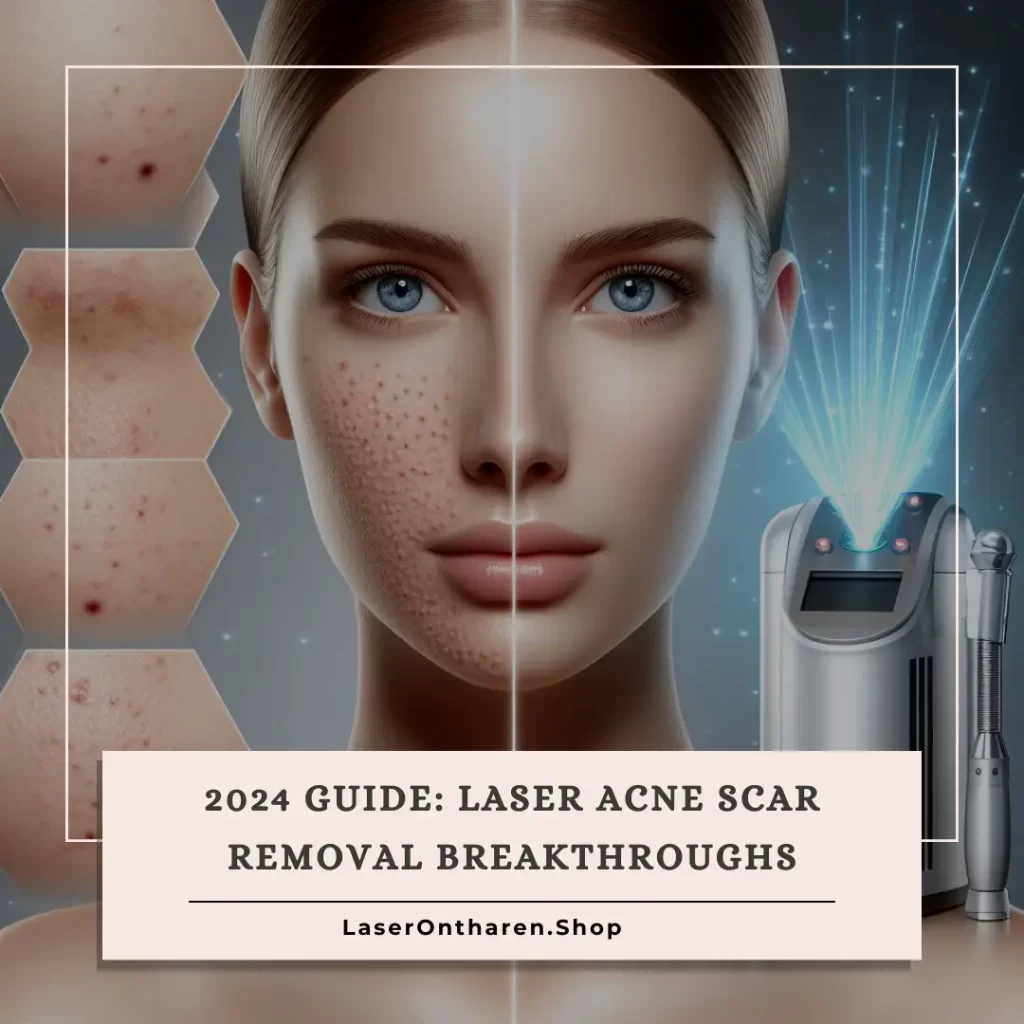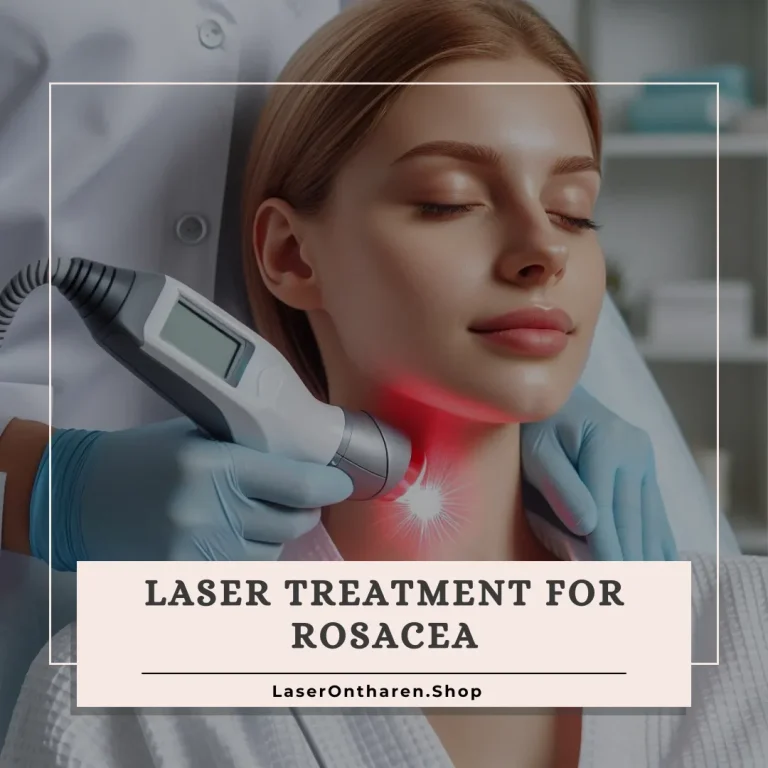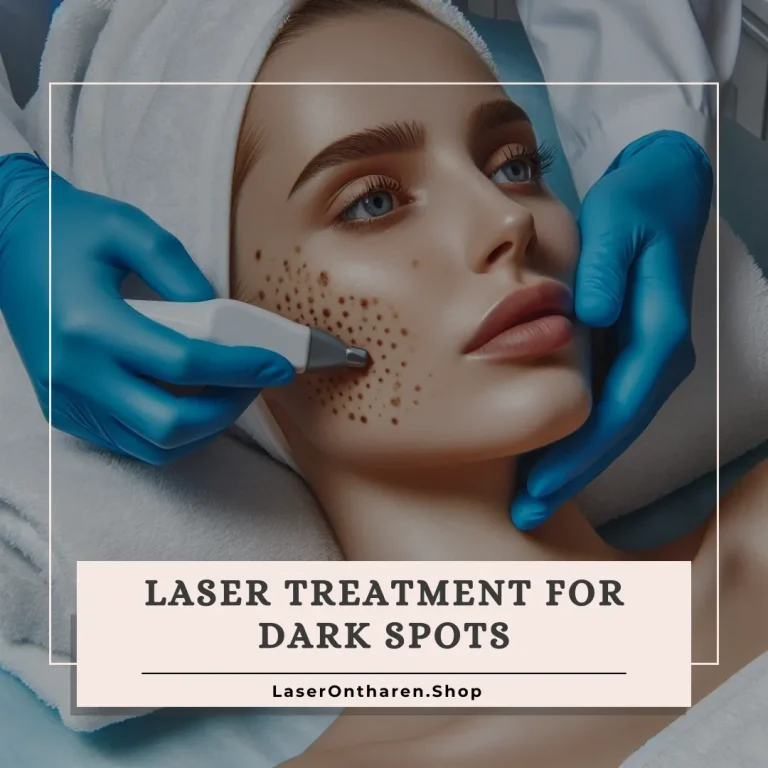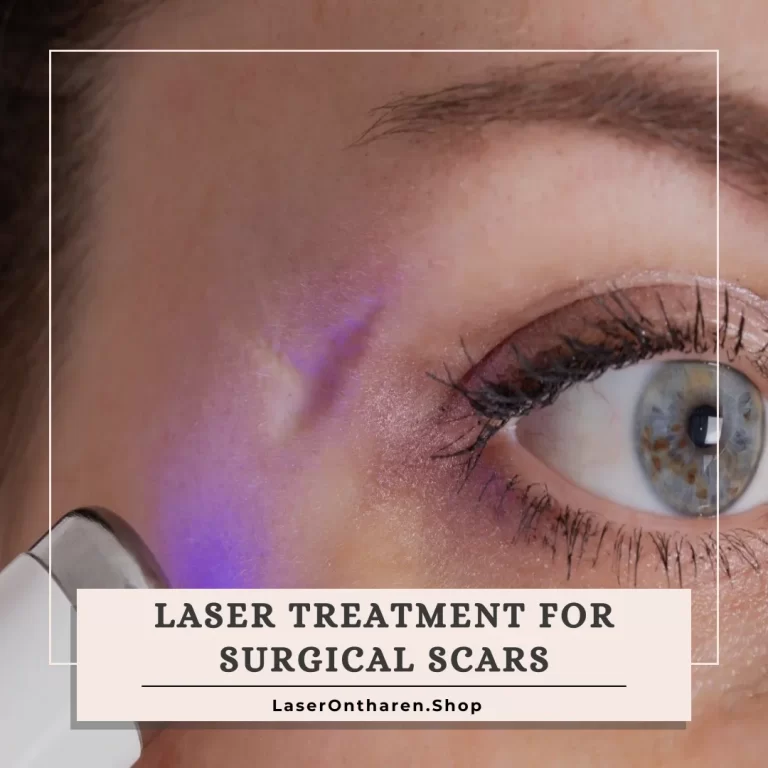Acne scars can often remain as stubborn reminders of past breakouts. However, advancements in laser technology have paved the way for effective treatments.
At Laser Ontharen, we delve into the transformative power of laser treatments aimed at reducing the visibility of these scars.
A significant number of individuals—about 95%—who experience acne will also face some degree of scarring.
Laser treatments play a crucial role in addressing these scars.
By directing concentrated light towards the upper skin layers, these treatments work to disrupt the scar tissue.
Concurrently, this process also fosters the growth of fresh, healthy skin cells that gradually take the place of scarred tissue.
It’s important to note that while laser treatments can significantly diminish the appearance of acne scars, they do not entirely erase them.
Additionally, they can alleviate discomfort associated with these scars.
However,
laser treatments aren’t a one-size-fits-all solution. Factors like ongoing acne, darker skin tones, or notably wrinkled skin can impact the suitability of this treatment.
Consultation with a qualified dermatologist is key to ascertain if laser treatment for acne scars aligns with your skin’s needs.
At Laser Ontharen, we’re committed to guiding you through the intricacies of laser treatment options for acne scars, ensuring you’re informed and confident in your skincare choices.
Costs of Laser Acne Scar Removal
Investing in laser treatments for acne scars is an important consideration, especially since these procedures are generally not covered by standard insurance policies.
The cost for these treatments can vary, as highlighted by data from the American Society of Plastic Surgeons.
On average,
the expense for ablative laser skin resurfacing hovers around $2,000, while non-ablative treatments may cost about $1,100.
Several factors influence the final price tag, including:
- The number and type of scars you’re addressing
- The size of the area undergoing treatment
- The total number of sessions required for optimal results
- The expertise and qualifications of the treatment provider
One of the advantages of opting for laser treatments is the minimal downtime involved.
Most individuals can resume their normal activities, including returning to work, within a couple of days post-treatment.
Before settling on a provider, it’s advisable to consult with multiple specialists.
This helps in understanding different approaches and cost structures.
Bear in mind, some practitioners might include a consultation fee to evaluate your skin and propose a treatment strategy.
Mechanism of Action: Laser Treatment for Acne Scars
Laser therapy for acne scars operates through a dual-action process.
Initially,
the laser’s heat is directed to the uppermost skin layer affected by scarring.
This process facilitates the gentle peeling of the scarred skin layer, revealing a smoother skin surface underneath.
Consequently, scars become less prominent, enhancing the skin’s overall texture.
In the second phase,
the combination of heat and light from the laser plays a pivotal role in disintegrating the scar tissue.
This not only stimulates the regeneration of new, healthier skin cells but also improves blood circulation to the treated area. The targeted heat reduces inflammation by focusing on the blood vessels within the scar.
The cumulative effect of these actions results in scars that are visibly flatter and less red.
This not only minimizes their appearance but also accelerates the natural healing process of your skin, leading to a more even and revitalized skin texture.
Procedure: Utilizing the Co2 Fractional Laser for Acne Scars
When addressing acne scars, the choice of laser technology is crucial.
At Laser Ontharen, we recommend starting with our advanced Co2 Fractional Laser.
This professional-grade equipment excels in precision, making it ideal for tackling various types of skin concerns, including acne scars.
Co2 Fractional Laser Resurfacing
Our Co2 Fractional Laser offers a refined approach to skin resurfacing.
It targets skin imperfections with pinpoint accuracy and is particularly effective in stimulating collagen production.
This results in faster healing and minimal downtime, making it a preferred choice for clients seeking efficient and visible improvements.
Discover more about the Co2 Fractional Laser Device
or
CO2 Laser Skin Resurfacing – complete guide – Laser onTharen
Other Laser Treatments
While the Co2 Fractional Laser is our top recommendation, other laser types like erbium YAG and pulsed-dye lasers are also available for specific scarring issues.
Each laser type has its unique method of addressing scars, ensuring a personalized treatment approach for every client.
Ablative Laser Resurfacing
Utilizing either an erbium YAG or CO2 laser, ablative resurfacing focuses on removing the entire top layer of skin in scarred areas.
Post-treatment, it typically takes between 3 to 10 days for the skin’s redness to diminish.
Non-Ablative Laser Resurfacing
This approach leverages infrared lasers, aiming to boost collagen production and foster new cell growth.
This growth replaces the scarred tissue, aiding in skin repair and rejuvenation.
Fractional Laser Treatment
Fractional lasers, such as Fraxel, are designed to target the tissue beneath the scar, focusing on the removal of darkly pigmented cells under the skin’s top layer.
This technique is particularly effective for treating boxcar and icepick scars.
Areas Treated with Laser for Acne Scars
While the primary focus of laser treatments for acne scars is often the face, their application extends to other areas commonly affected by acne scars.
The laser can effectively treat scars on various parts of the body, enhancing skin appearance and texture. Key areas include:
- The face, where acne scars are most visible.
- Arms, often exposed to the sun and prone to scarring.
- The back, a common area for acne breakouts and scarring.
- Upper torso, where scars can affect skin uniformity.
- Neck, to ensure a smooth transition from facial treatment.
The Risks and Side Effects of Laser Acne Scar Treatment
Laser treatments for acne scars are highly effective, but like all medical procedures, they come with certain risks and side effects.
The severity and type of side effects largely depend on the kind of laser used, your skin type, and the number of treatments you undergo.
Common Side Effects
The typical side effects experienced after laser treatments can include:
Swelling and Redness: These are common reactions, with redness potentially lasting several months.
Pain: Generally, pain associated with laser treatment for acne scars is mild and temporary, subsiding within a few hours.
Acne and Milia: Post-treatment, the application of thick creams and bandages can exacerbate acne or lead to the formation of tiny white bumps known as milia.
Infection Risks: There’s a risk of bacterial, viral, or fungal infection post-treatment.
A common concern is the reactivation of the herpes virus, which causes cold sores.
Specific Risks
Hyperpigmentation and Hypopigmentation: Changes in skin color can occur, with the skin either becoming darker (hyperpigmentation) or lighter (hypopigmentation) than its natural tone. This is more prevalent in individuals with darker skin tones.
Scarring: While rare, there is a slight risk of scarring, especially with ablative laser resurfacing.
Preparation and Recovery
Proper preparation and aftercare are crucial to minimize risks:
Pre-Treatment Care: Avoiding certain medications and unprotected sun exposure, and quitting smoking a few weeks before the procedure can reduce risks.
Post-Treatment Care: For ablative treatments, expect the treated area to be raw and swollen, requiring diligent wound care and sun protection.
Nonablative treatments typically have a shorter and less intense recovery period.
Consultation Is Key
It’s essential to discuss your medical history, skin type, and expectations with a dermatologist.
They can guide you on the best type of laser treatment for your acne scars, taking into account your individual risk factors.
Setting Realistic Expectations for Laser Acne Scar Treatment
When considering laser treatments for acne scars, it’s crucial to maintain realistic expectations. While these treatments can significantly improve the appearance of scars, complete eradication of scars is unlikely.
The effectiveness varies from person to person, and the degree of improvement can differ.
Post-Treatment Skincare
Post-treatment, special attention to skincare is essential.
Key points include:
- Sun Protection: Your skin becomes more sensitive to sunlight after laser treatment. Consistently applying sunscreen with a high SPF is vital whenever you step outside.
- Avoiding Sun Exposure: It’s advised to steer clear of tanning and limit sun exposure for about 6 to 8 weeks following treatment.
- Special Skincare Products: Your dermatologist might recommend specific skincare products like a gentle toner or a hydrating moisturizer to enhance the treatment’s effectiveness and support skin healing.
- Cleanliness and Makeup: Keeping the treated area clean is critical to prevent infection. It’s often recommended to avoid makeup for at least a week post-treatment to reduce the risk of complications.
- Redness and Healing: You may experience residual redness in the treated area for some time. While the initial healing occurs within 7 to 10 days, it might take longer to fully appreciate the results.
Anticipating Results
The outcomes of laser treatment for acne scars are long-lasting but not immediate.
Gradually, over the days and weeks following your treatment, the improvements in the appearance of acne scars become more apparent.
Preparing for Your Laser Treatment for Acne Scars
To ensure the best possible results and minimize risks, certain preparatory steps are recommended before undergoing laser treatment for acne scars:
Avoid Blood Thinners: For two weeks prior to the procedure, refrain from taking aspirin or any supplements that have blood-thinning effects.
No Smoking: Smoking can affect healing and recovery. It’s advisable to stop smoking at least two weeks before the treatment.
Skincare Product Restrictions: Discontinue the use of any skincare products containing retinol for two weeks before your treatment.
Retinol can increase skin sensitivity and may affect the treatment’s outcome.
Acne Medication Considerations: Depending on your specific case, you might need to pause certain acne medications before undergoing laser treatment.
This will be determined by your skincare professional.
Prophylactic Medication: If you have a history of cold sores, your dermatologist may prescribe a preventive antibiotic to reduce the risk of an outbreak post-treatment.
Finding the Right Provider for Laser Acne Scar Treatment
Laser treatment stands out as an efficient method for diminishing the appearance of acne scars.
The key to a successful outcome lies in choosing the right provider.
Consult a Board-Certified Dermatologist: Your journey should begin with a consultation with a board-certified dermatologist.
They are equipped to evaluate your skin’s condition and determine if laser treatment is a suitable option for you.
Exploring Options: If you don’t have a dermatologist, or if you’re looking to explore different providers, consider visiting our website at Laser Ontharen.
We offer expert consultation and a range of laser treatment options tailored to your specific needs and budget.
Comparing Providers: It’s beneficial to shop around and speak with various providers.
This allows you to compare different treatment approaches and costs, helping you make an informed decision that aligns with your skincare goals and budget.




